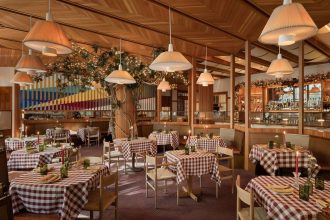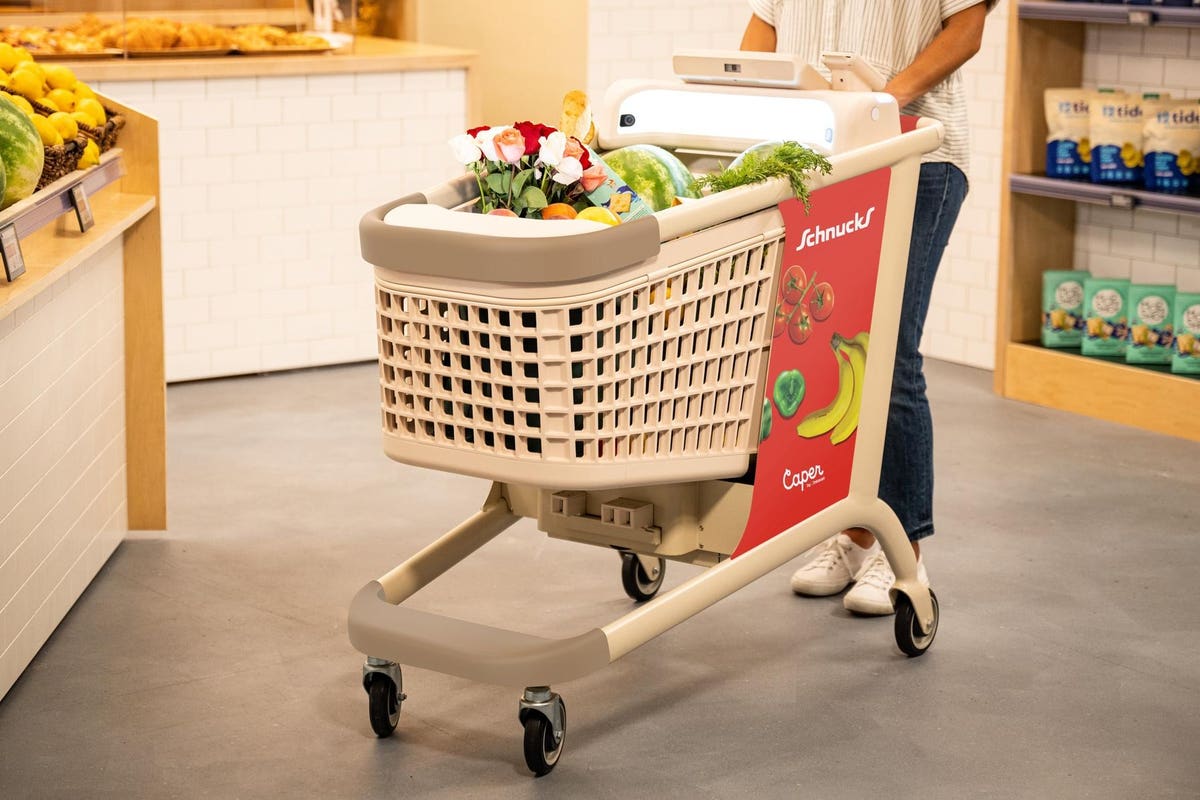The most innovative grocer in America is not Walmart
WMT
AMZN
AMZN
In a surprise revelation a few weeks ago, Schnuck Markets (aka “Schnucks”) announced a new partnership with Instacart to introduce Caper Carts within its stores. Caper Carts are, in essence, smart carts, meaning they use “AI and computer vision to automatically identify items shoppers put into them, allowing shoppers to then skip the line and check out.”
The idea of a smart cart is nothing new. Amazon, for example, rolled out its own version, the Dash
DASH
So, at this point, saying that smart carts are the be all, end-all answer to checkout-free shopping is, pardon the pun, a little like putting the cart in front of the Clydesdales.
But that also isn’t the point of this article.
No, the real reason this announcement is so important is that it stands out as a testament to Schnucks’ consistent commitment to smart store technology innovation.
For years now, Schnucks has been weaving a tapestry of intelligent tech adoption into its operations, all aimed at optimizing the shopping experience while ensuring a solid return on investment. Instead of embracing the latest fads in technology, Schnucks has systematically integrated smart tech into its operations, leveraging everything from ESLs (Electronic Shelf Labels) to inventory monitoring robots.
Take a look at a quick timeline synopsis of the last few years:
- (July 2017) Schnucks begins its first test pilots of in-aisle robots to monitor inventory and pricing on shelf
- (August 2021) Schnucks announces the full scale deployment of said robots throughout its 100 plus stores
- (September 2022) Schnucks, on the heels of Instacart’s acquisition of Eversight, a pricing and promotions engine, openly discusses the value Eversight brings to its own customers
- (February 2023) Schnucks announces publicly that it has begun testing ESLs
- (July 2023) Schucks announces the Caper Cart partnership and the further expansion of ESLs to all stores
The above timeline is an example of a step-by-step, test-and-learn approach to creating a smart grocery store. The robots monitor inventory and pricing in almost real-time; the electronic shelf labels allow Schnucks to adjust prices with minimal labor costs; and the aforementioned promo engine helps to determine at what level those prices should be set.
This last paragraph alone is enough to set Schnucks apart in the grocery landscape, and now the addition of the Caper Cart is just the next logical step in the progression of building out the grocery store of the future even further.
Will it work? Who knows?
Schnucks’ smart cart implementation will be different because this time consumer adoption is required. That isn’t really the case with labels, robots, and algorithms. Smart carts, on the other hand, require customers to alter their shopping habits.
Will a smart cart grocery experience be markedly better than a self-checkout one? Will customers find it more appealing than other potential computer vision assisted “Just Walk Out”-like experiences in the future?
These are all valid questions that only time will answer and that is exactly the point here – namely, that Schnucks is attempting to answer them!
Instead of sitting on the sidelines, Schnucks has, for the past six years, been actively learning from its experiments all while evolving a grocery store chain that is over 100 stores large.
That is what sets Schnucks apart from its competition.
Amazon, with all its fancy “Just Walk Out” technology, has no meaningful history in running physical stores under its Amazon Fresh grocery banner. Unlike Schnucks and its almost 100 year history, Amazon is still learning how to create an in-store grocery shopping experience that keeps people coming back for something more than just a souped technology gimmick (see video below).
Walmart, in contrast, has started and stopped with many of the same ideas Schnucks has already implemented chain-wide (see robots), and, while Walmart appears to be finally headed down a meaningful ESL path, too, even it cannot hold a candle to Schnucks in terms of understanding the full scope of the long-term operational impact from having all these experiments run in tandem with one another.
Because the most important thing one needs to keep in mind when it comes to developing a smart grocery store of the future is that no one technology reigns supreme. A truly smart store is a cocktail of high ROI producing technologies deployed in such a way so that one plus one equals three.
All of which is what makes the work Schnucks has done so commendable. It takes real leadership to look at the long-term kit of parts value of a smart store design versus the return on investment from one technology deployment in isolation.
Or, said another way, it takes guts and intestinal fortitude in a similar vein to that of the early explorers, like Lewis and Clark, for whom the famed St. Louis Gateway Arch is meant to honor.
The only difference here being that this time the exploration is designed around a better grocery shopping future. Something that, more than likely, many Americans will also gladly get behind.
Read the full article here





